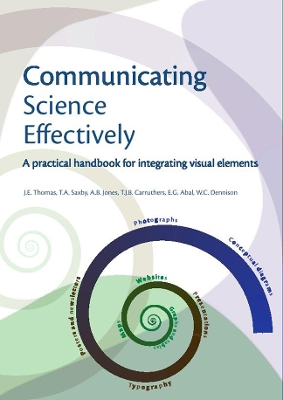This is a practical handbook on how to communicate science effectively. The first part is an introduction to the principles of science communication and what effective science communication is, why it is important, and how to do it. The principles in these chapters include how effective science communication can change societal paradigms and make one a better scientist. General principles relating to all science communication products include providing synthesis, visualisation, and context, assembling self-contained visual elements such as photos, maps, conceptual diagrams and data, formatting content to define and simplify terms, and eliminating jargon and acronyms. Formatting of these visual elements is also discussed. This introduction is followed by chapters outlining techniques and principles for communicating in different media & desktop publishing (including posters and newsletters), presentations and websites. Techniques in these chapters include image, colour, and font formats, resolution and design tips for different media. Finally, a case study is presented to illustrate how effective science communication has become an integral part of a successful environmental science, monitoring, planning, and implementation program. The book is accompanied by extensive internet resources, including interactive software tutorials for the different software programs commonly used in communication, discussion forums for science communication issues, and links to other websites of interest. This book will be a valuable resource for scientists, working in government, research, management agencies, and education. Although environmental scientists are the primary audience, the principles and techniques discussed are applicable to scientists from all fields.
- ISBN10 1843391252
- ISBN13 9781843391258
- Publish Date 30 September 2006
- Publish Status Active
- Publish Country GB
- Imprint IWA Publishing
- Format Paperback
- Pages 140
- Language English
